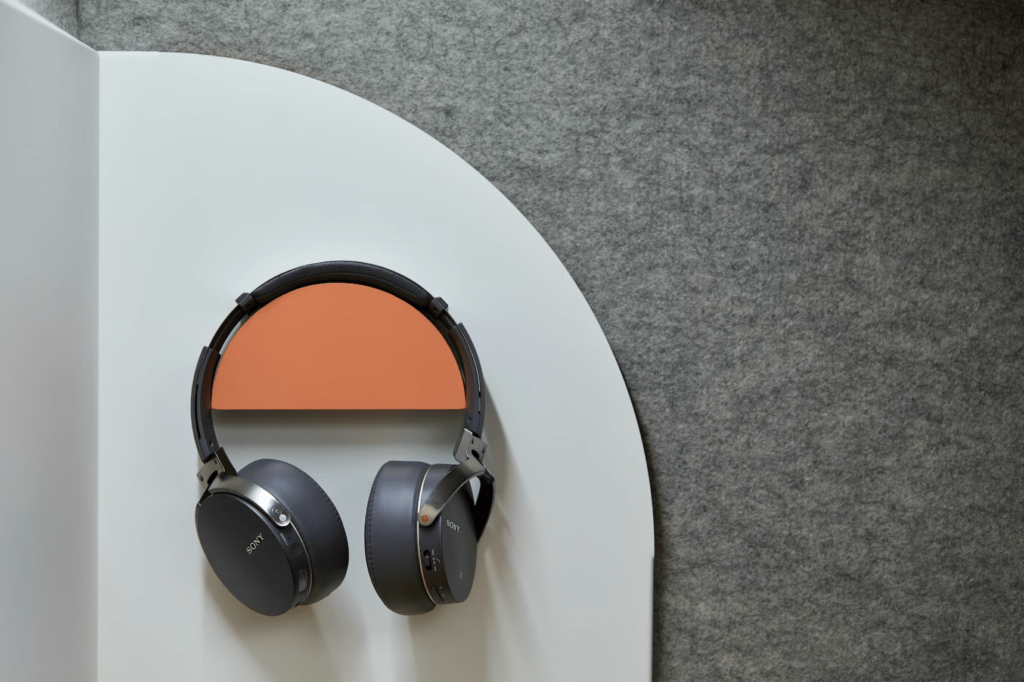What Is Apple Spatial Audio: An Easy Guide to Apple’s Immersive Sound Feature
You’re in the right place if you’re curious about Apple Spatial Audio and its necessity. Spatial Audio is a 360-degree sound format that mimics a surround effect through speakers, such as headphones or earbuds. Initially, spatial audio was primarily perceived as improving video playback with Apple’s AirPods Pro earbuds and AirPods Max headphones. However, Apple Music also provides spatial audio content now.
Are you curious about spatial audio and how it can be used? You’ll find everything you need in our guide! Find out how to set up this 3D format, find compatible content, and ensure you have the proper hardware for a complete immersion in spatial audio.
What Is Apple Spatial Audio?

Apple’s immersive 360-degree sound technology is known as spatial audio, a term also generally used. This digital surround sound makes it seem like sounds are coming from every direction. Although similar to living room surround sound, spatial audio retains origin points even when the speakers, such as AirPods Pro, AirPods Pro 2, or AirPods Max, are moving
Suppose you’re watching a movie on one of the best iPhones when someone walks on the left side. If you turned your head to the left, you would hear footsteps right before you. 360-degree audio, such as Dolby Atmos or DTS:X, can enhance the immersive experience of TV and movies with a sense of height. Spatial audio uses Atmos as a foundation, with content originally being mastered for Dolby’s platform.
How do we use spatial audio?
Having the appropriate hardware is crucial to use spatial audio. Spatial audio-compatible headphones include AirPods Pro (both 1st and 2nd Generation models), AirPods Max, AirPods (3rd Generation), and Beats Fit Pro. While some older models didn’t initially have spatial audio support, they’ll be supported automatically with the latest firmware update.
According to Apple, any headphones can play songs with spatial audio for Apple Music’s spatial audio content. For other headphones, you just need to switch on Dolby Atmos in the Apple Music app’s settings and set it to “Always On.”
Spatial audio is available on the integrated speakers in newer Apple devices running iOS 15.1 or newer. Spatial audio is supported by various iPad models, including:
- iPad Pro 12.9inch (3rd generation)
- iPad Pro 11inch, iPad Air (3rd generation)
- iPad (6th generation)
- iPad mini (5th Generation).
Like Apple Music’s spatial audio content, Netflix has added spatial audio support to all its subscription tiers without extra charges. This feature allows users to enjoy the immersive sound format through their TV speakers or additional speakers.
To experience spatial audio with video content, you’ll require compatible headphones and a source device. Apple TV 4K and specific macOS devices, such as MacBook Pro, support spatial audio. The following mobile devices are compatible with spatial audio for video playback:
- iPhone 7 or later
- iPad (6th Gen) or later
- iPad Air (3rd Gen) or later
- iPad mini (5th Gen)
- iPad Pro 12.9 inch (3rd Gen) or later
- iPad Pro 11 inch (1st Gen) or later.
How To Turn On/Off?
Once you have compatible hardware, you can quickly turn spatial audio on or off. To disable spatial audio while watching a video, open the Control Center, press and hold the volume control, and then select the spatial audio option to turn it off.
If you want to turn spatial audio on or off for all your devices, go to Settings and choose Bluetooth. Find your AirPods in the list of connected devices, tap on the “i” icon, and toggle the spatial audio switch on or off.
According to Apple, the spatial audio content on Apple Music can also be played through the speakers of the latest iPhone, iPad, and Mac models. However, it’s unlikely that the immersive effect will be as strong as when you use headphones.
Amazon Music HD and Tidal music streaming services also offer Dolby Atmos-compatible songs, but some limitations exist. Amazon only allows Atmos playback on its Echo speakers, while Tidal seems to only support its immersive capabilities with Sony’s 360 Reality Audio.
On the bright side, multiple streaming options exist for compatible TV shows and movies. Apple TV Plus, HBO Max, Disney Plus, Hulu, and Netflix now supports spatial audio through their Atmos-enabled content.
How does it work?

A sound engineer maps dialog, sound effects, and music soundtracks in a digital 3D space. Good sources are placed around a sphere, creating the illusion of multiple births. In addition, engineers can adjust the perceived “distance” of sounds.
Headphones cannot create rue surround sound, nor can noise bounce off ceilings like Dolby Atmos. Therefore, spatial audio’s surround sound effect is entirely digital.
The process of achieving 360-degree audio playback on headphones is quite complex. It adjusts how sounds are played digitally to create the illusion of sound coming from a specific direction. It requires both ears to perceive the sound effect, even if it comes from two drivers on either side of the head.
With a compatible playback device, headphones, and an encoded source track, you can simulate looking around in a 3D space. Typical anchor devices are phones and tablets paired with headphones with accelerometers and gyroscopes.
When you turn your head within the 3D space, the technology ensures sounds come from the correct direction.
Most spatial audio implementations use more direct 3D audio effects since not all headphones have head-tracking sensors. It may seem like vocals and instruments surround the listener, but their origin points won’t remain fixed.
Conclusion
After reading this article, you should better understand what Spatial Audio is and how to utilize it. Horror movies, for instance, should be even more terrifying.
If there is anything you believe we may have overlooked in this article, please let us know. While the concept of spatialized audio about extraterrestrials may have given us shivers, we welcome your feedback. Feel free to share any issues you’ve encountered with Apple’s Spatial Audio.


